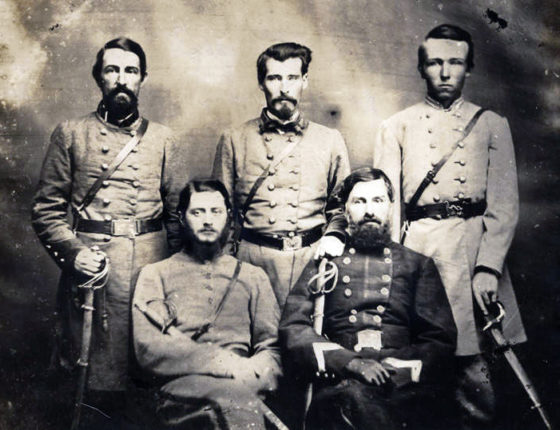
“Dunn epitomized the swashbuckling Victorian officer.”
By Alex Zakrzewski
ON THE northwest corner of Clarence Square, a small park in downtown Toronto, stands an easily overlooked blue plaque dedicated to a war hero who deserves a more prominent place in Canadian military history.
Alexander Roberts Dunn was born 1833 near where his plaque now stands in what was then York, Upper Canada, to a well-to-do family. He attended the prestigious Upper Canada College before relocating with his family to Britain, where in 1852, he joined the 11th (Prince Albert’s Own) Hussars, a celebrated cavalry regiment.
Standing an impressive six feet and three inches tall, with long blonde hair and a drooping moustache, Dunn epitomized the swashbuckling Victorian officer in his ornate cavalryman’s uniform. An extra-long four-foot sabre even had to be made to suit his large frame.

In 1853, the Crimean War broke out in Europe, and the 11th Hussars were sent to the Crimea as part of the British Army’s Light Brigade. On October 25, 1854, during the Battle of Balaclava, they took part in one of the most famous cavalry charges in military history.
Due to a series of blunders and miscommunications, the Light Brigade was ordered to conduct a near-suicidal charge against a battery of Russian cannon. So unbelievable was the command that French Marshal Pierre Bosquet was moved to utter the now immortal battlefield words, “C’est magnifique, mais ce n’est pas la guerre.”
Despite being showered by cannon and rifle fire, the Light Brigade managed to reach the Russian lines where they were attacked from all sides. It was amid this chaos that Lieutenant Dunn distinguished himself by rushing to the aid of Sergeant Bentley, who was being pursued by a group of Russian horsemen.

Dunn rode up behind the enemy and, according to Bentley, cleaved one of his pursuers “almost to the saddle” with his enormous sabre before fighting off the rest. He carried the unhorsed Bentley to safety then returned to the fray to save another comrade, cutting down several more of the enemy in the process.
For these two acts of conspicuous gallantry, Dunn was unanimously chosen by the 11th Hussars to be among the first recipients of the Victoria Cross when it was instituted two years later. Queen Victoria personally presented the first 62 awards at a ceremony in Hyde Park, London.
Unfortunately, Dunn was not among them. He had already left the army and run away to his Canadian estate with the wife of his commanding officer, a considerable scandal at the time – especially considering the cuckolded husband refused to grant a divorce.
Though he had the means to live in comfortably for the rest of his life, in 1857 he rejoined the army, helping to raise the 100th (Prince of Wales’ Royal Canadian) Regiment for service in the Indian Mutiny. Before departing, he was presented with a sword recently found on the Plains of Abraham and believed to have belonged to General James Wolfe.

The Canadians never did see service in India, being posted instead to Gibraltar. In 1863, Dunn transferred to the 33rd Regiment where he became the youngest colonel in the British Army and the first Canadian to command a British Army regiment.
In 1868, Dunn and the 33rd joined the British Expedition to Abyssinia (now Ethiopia), a largely forgotten colonial campaign, where his promising career was to be cut short under mysterious circumstances.
On January 25, 1868, while hunting near Senafe in modern-day Eritrea, Dunn stopped for a drink and sent his manservant to collect water from a nearby stream. When the servant returned, Dunn was dead, having been shot in the chest with his own double-barrelled shotgun.
His death was officially ruled a tragic accident, with an investigation concluding that the gun slipped and accidently discharged. His supposed final words to his manservant to fetch a doctor support this explanation.

However, a more sinister theory suggests that he was murdered by his valet, whom he had recently written out of his will. The disappearance of the new will, along with some valuable jewellery, and the valet’s later conviction for a separate crime, raises unsettling questions.
Some also speculate that Dunn, a noted womanizer and heavy gambler, took his own life to avoid another damaging scandal – one that his wealth and connections could not get him out of.
Dunn was buried in Senafe, and his grave was largely forgotten until the Second World War when the British returned to wrest control of the region from Mussolini’s fascist regime. They were surprised to find that the Italians had maintained Dunn’s grave for years.

In 2001, a group of Canadian Forces engineers repaired the grave, which is now cared for by the Commonwealth War Graves Commission – a forgotten memorial to a hero whose life and deeds deserve a more celebrated place in his country’s memory.
Alexander Zakrzewski is a Toronto-based freelance writer with a passion for military history. Follow him @AlexZed85 or reach out to him on LinkedIn. He loves sharing ideas with fellow military history enthusiasts.










Great article, thank you!
I was with UNMEE in Eritrea in 2000/2001 at the time the grave of Alexander Roberts Dunn VC was found after being lost through time. An event never to be forgotten as the UN troops were lead to it by the local children of Senafe recognizing the Canadian maple leaf. The Canadian troops of NECBAT also named their temporary base just near Senafe “Camp Dunn”, which we visited. May he rest in peace.